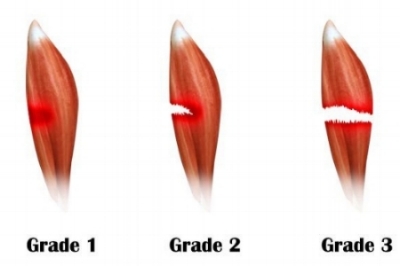According to the American Chiropractic Association, back pain is the second most common reason for visits to the doctor’s office, outnumbered only by upper-respiratory infections. It is also one of the leading causes of disability worldwide. It is estimated that 80% of Americans will experience an onset of back pain at some point in their lives. It is important to note that back pain typically is mechanical in nature, meaning inflammation of connective tissue structures versus more pathological symptoms such as cancers, infections, and inflammatory diseases.
There is no cookie cutter approach to treating back pain. What treatment ‘worked’ for your friend, may increase your own pain. So, let’s break it down and discuss the 4 most common types of mechanical low back pain.
Strain/Sprain
This refers to an overstretching or tearing of either the muscular or ligamentous tissues that help to support our spine and pelvis. Sprains and strains can occur in both a chronic or an acute fashion. If our body is involved in a traumatic event and we find ourselves moving in an unsuspected way that our body was not prepared for, the injury, inflammation, and pain typically has a sudden onset.
Chronic strains and sprains are harder to speculate the event leading up to pain. Typically, the injury has occurred slowly over time through long, sustained positions (sitting for hours on end), or by an overly repetitive activity (shoveling snow). Imagine holding an elastic band on stretch. Eventually the elastic fibers will fray, the structure becomes weaker and the band will break. The same goes for your connective tissues.
SI Joint Pain
The sacroiliac joint (SI joint) is a hefty joint found in between the sacrum and either sides of your pelvis. Again, many muscles and ligaments connect to these joints, and they are a common area of ligamentous sprains. However, SI joint pain is typically felt on one side of the low back. It may radiate into the hip or thigh, but usually does not cross the knee. Pelvic unleveling is often present, making one leg functionally longer than the other. Patients often complain about difficulties walking, “feeling off balance”, or pain with going up and down stairs. Avoid sitting crossed-legged and be sure to remove any items out of your back pocket such as a wallet or cell phone, prior to sitting to help prevent this pain.
Disc Bulges & Herniations
Disc bulges and herniations are more common in a younger active population (under 50 years old). Disc pain typically occurs from insufficient core stability (not just your abs), along with too much pressure on the anterior or front portion of the disc. When describing disc pain, I often use the analogy of a jelly donut. When you squeeze a jelly donut, the jelly typically will move away in the opposite direction, and if you continue to squeeze hard enough it will ooze out of the back. Severe cases of disc injuries are called herniations. A disc herniation occurs when the outer portion of the disc ruptures and the inside of the disc protrudes enough to pinch and compress the nerves leaving our spinal cord. Typically radiating leg pain ensues, and numbness, tingling, or weakness of the lower leg will follow. It can often be mistaken by patients as a torn or strained hamstring muscle. If untreated, chronic compression of nerves can lead to muscle atrophy and nerve damage.
Lumbar Stenosis
Stenosis refers to a narrowing of space within the spinal column. It typically occurs in individuals older than 50, as it is often a side effect of prolonged wear and tear of the joint, osteoarthritis, or bone spurs. The space surrounding the nerves in the spine often becomes encroached, leading to compression and irritation on the nerves. The lumbar and cervical spine are common areas of the body to experience stenosis. Symptoms typically include significant leg pain, low back pain, along with numbness, tingling, and weakness of the leg and/or legs. Commonly, stenosis will cause lower back and leg pain that comes on after a certain amount of time standing or walking. The pain is then relieved by leaning over or sitting for a few minutes.
Many of these injuries can be treated successfully using conservative therapies such as chiropractic care, manual therapy, and rehab. In extreme cases, surgical referrals may be warranted. It is extremely important to get evaluated by a healthcare provider, to not only determine why you are having pain, but how to manage your condition.
At Boulder Sports Chiropractic we take the time to evaluate the specific cause of your low back pain. Our individualized treatments and home exercises will help you find relief while educating you how to eliminate any future flare-ups.





